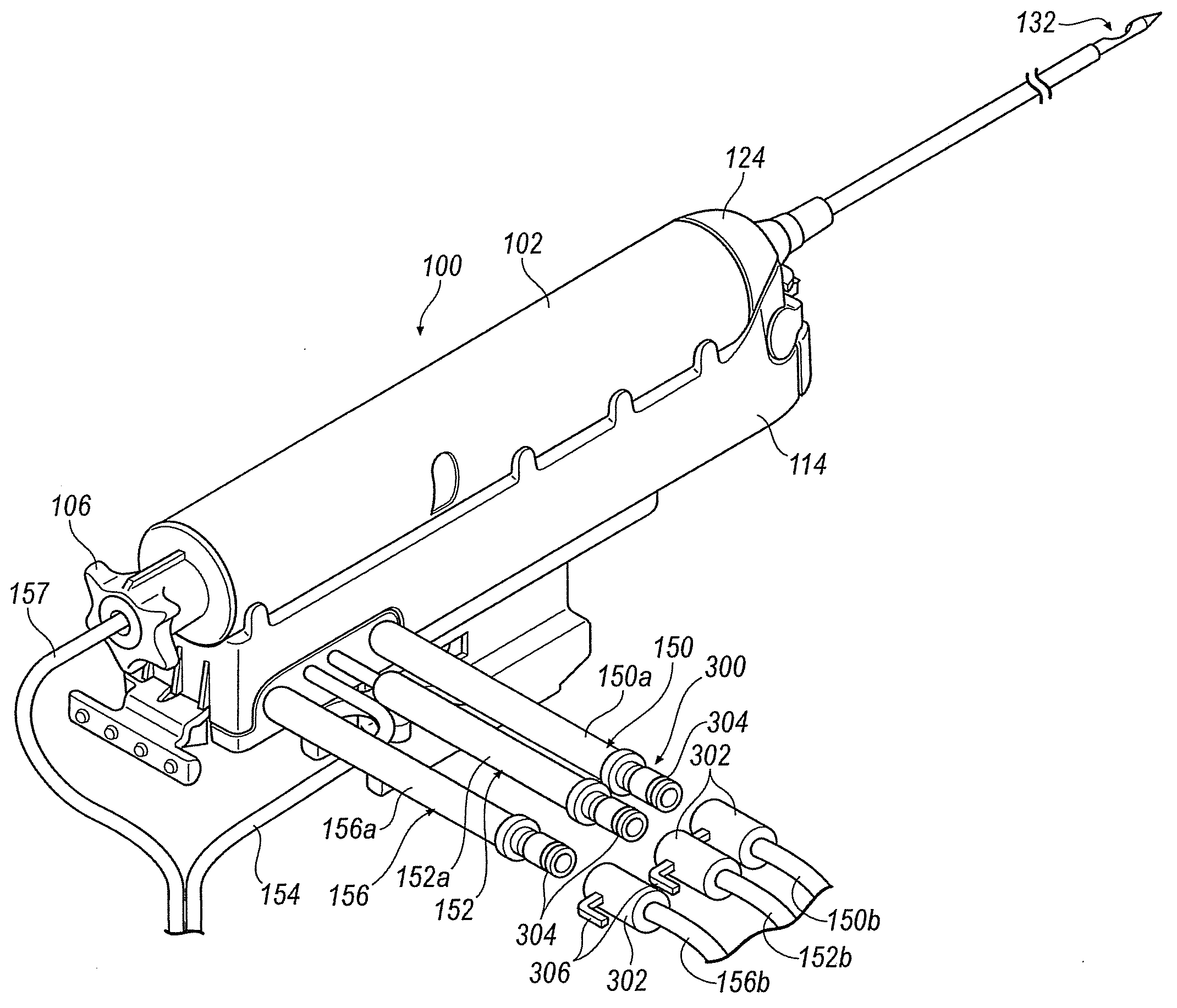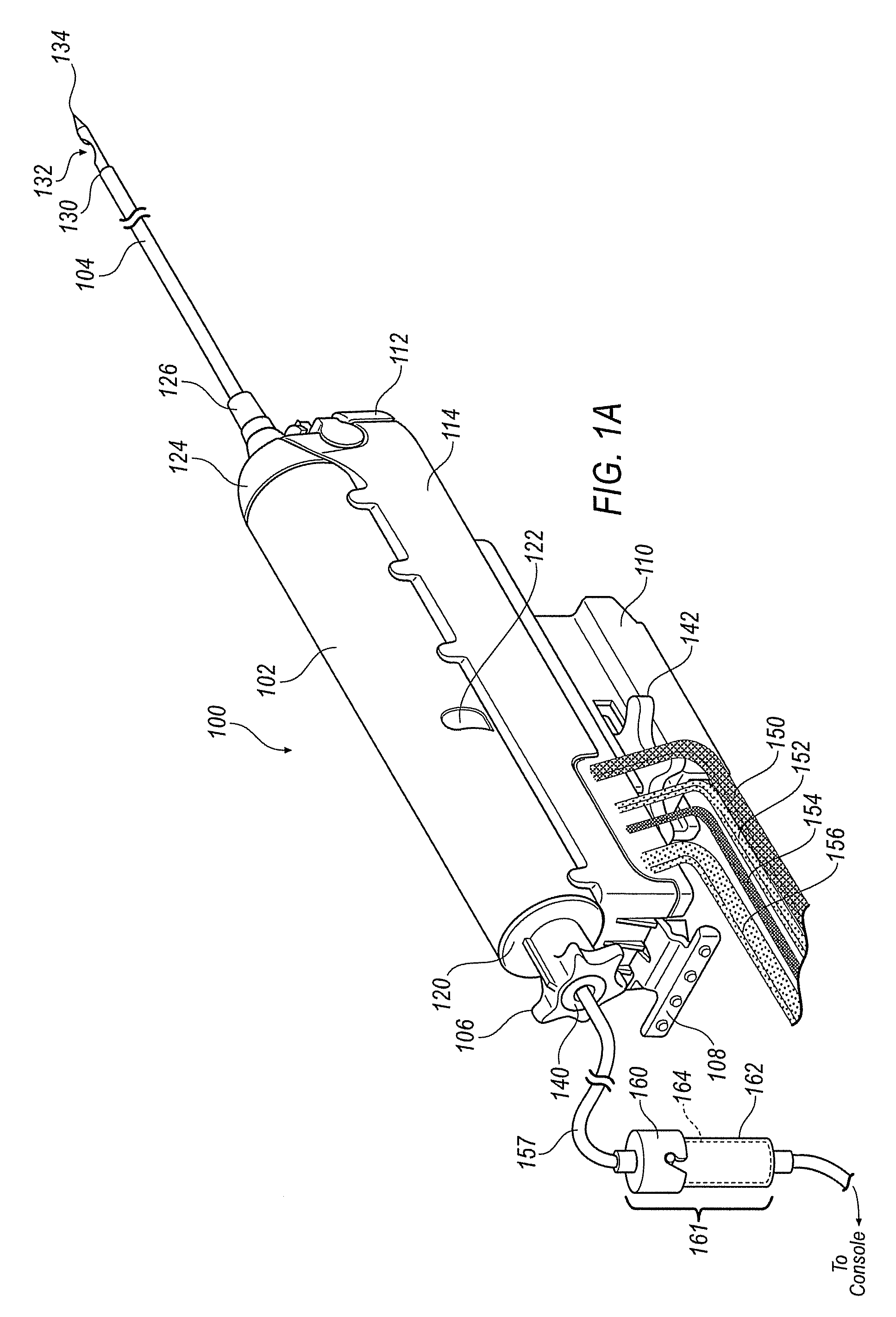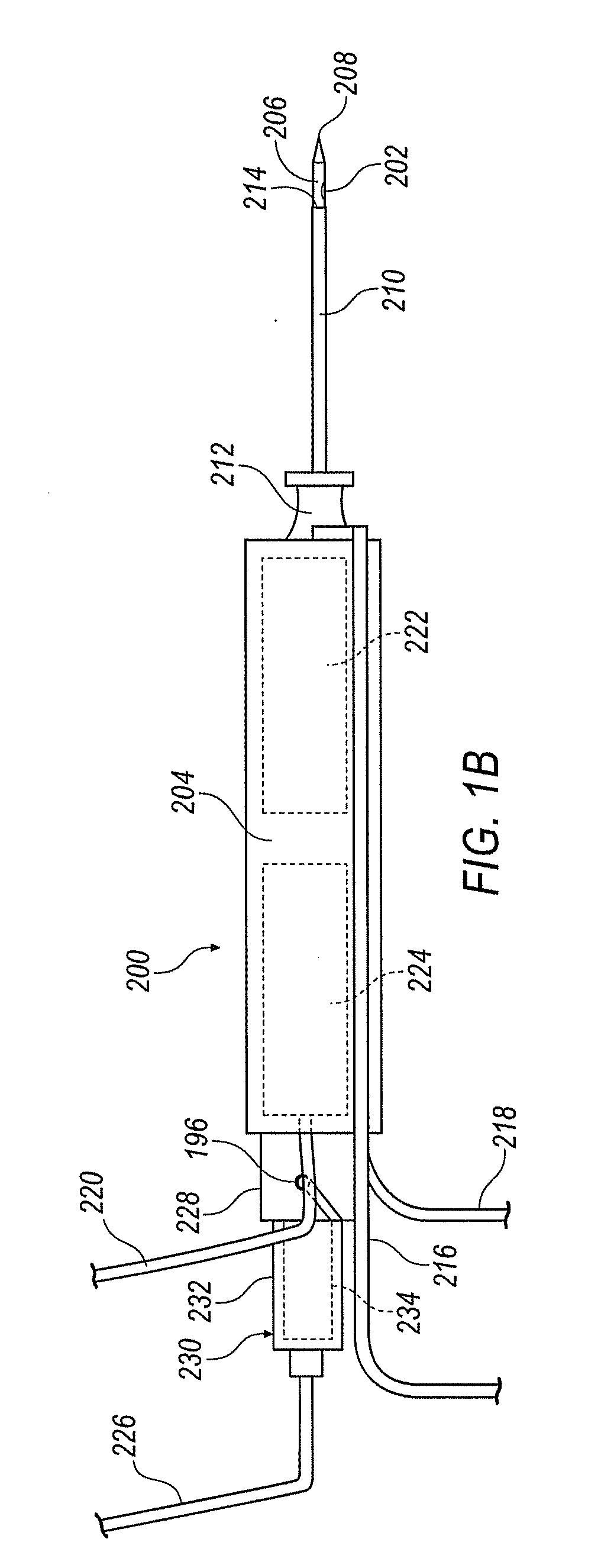Surgical system
a biopsy and surgical technology, applied in the field of biopsy systems and, can solve the problems of increasing the risk of infection and bleeding at the sample site, significant trauma to the breast tissue, and requiring considerable recovery time for the patient,
- Summary
- Abstract
- Description
- Claims
- Application Information
AI Technical Summary
Benefits of technology
Problems solved by technology
Method used
Image
Examples
Embodiment Construction
[0038]Referring now to the drawings, the preferred illustrative embodiments of the present disclosure are shown in detail. Although the drawings represent some embodiments of the present disclosure, the drawings are not necessarily to scale and certain characteristics may be exaggerated to better illustrate and explain the present disclosure. Further, the embodiments set forth herein are not intended to be exhaustive or otherwise limit or restrict the disclosure to the precise forms and configurations disclosed in the following detailed description.
[0039]Referring now to the drawings, FIG. 1A illustrates a surgical device 100. Surgical device 100 is configured as a stereotactic type surgical device such as shown in commonly owned U.S. patent application Ser. No. 11 / 132,034. A handheld surgical device 200, such as shown in commonly owned U.S. patent application Ser. No. 10 / 970,269, the contents of which are incorporated herein by reference in its entirety, is shown in FIG. 1B and wil...
PUM
 Login to View More
Login to View More Abstract
Description
Claims
Application Information
 Login to View More
Login to View More - R&D
- Intellectual Property
- Life Sciences
- Materials
- Tech Scout
- Unparalleled Data Quality
- Higher Quality Content
- 60% Fewer Hallucinations
Browse by: Latest US Patents, China's latest patents, Technical Efficacy Thesaurus, Application Domain, Technology Topic, Popular Technical Reports.
© 2025 PatSnap. All rights reserved.Legal|Privacy policy|Modern Slavery Act Transparency Statement|Sitemap|About US| Contact US: help@patsnap.com



